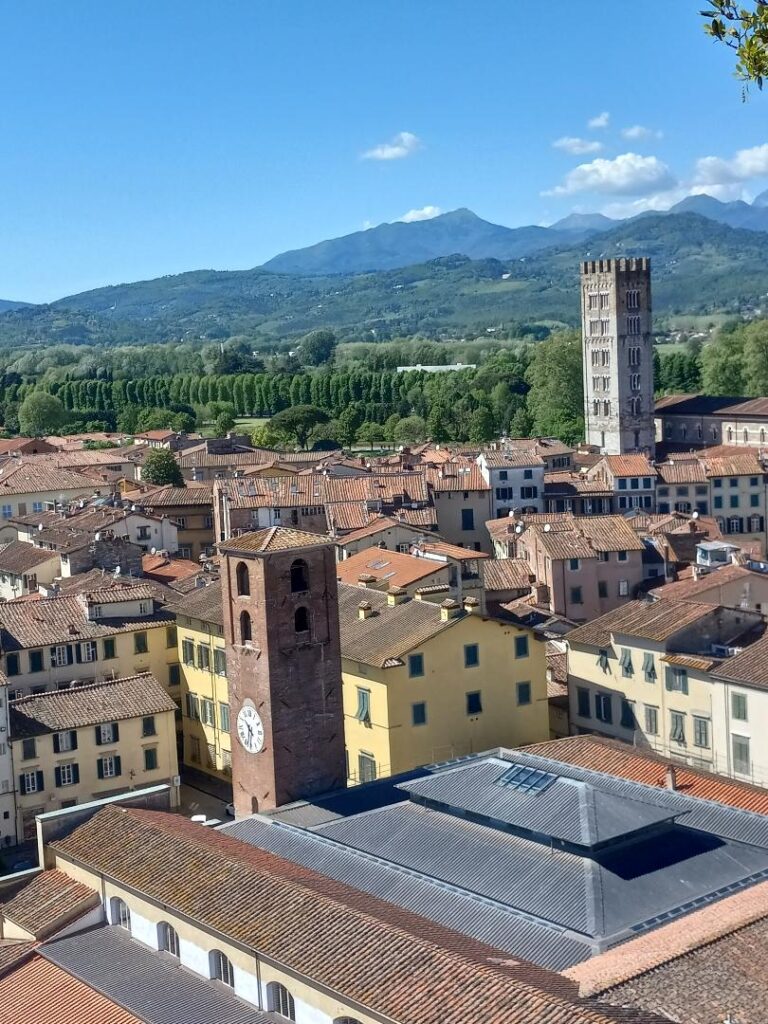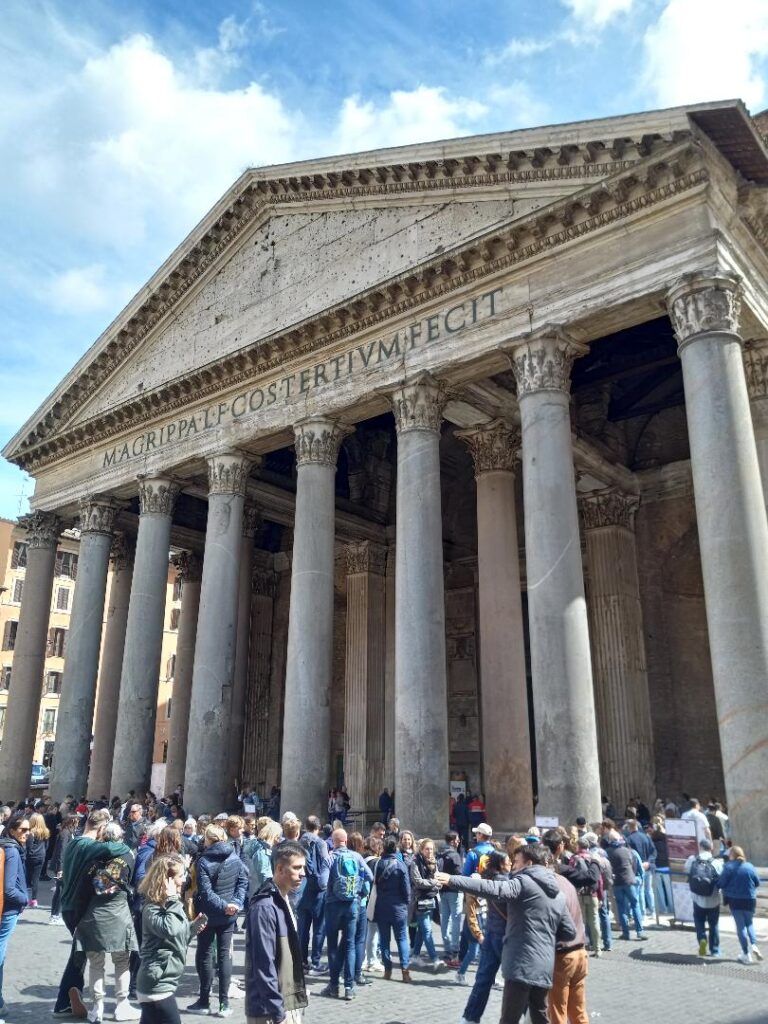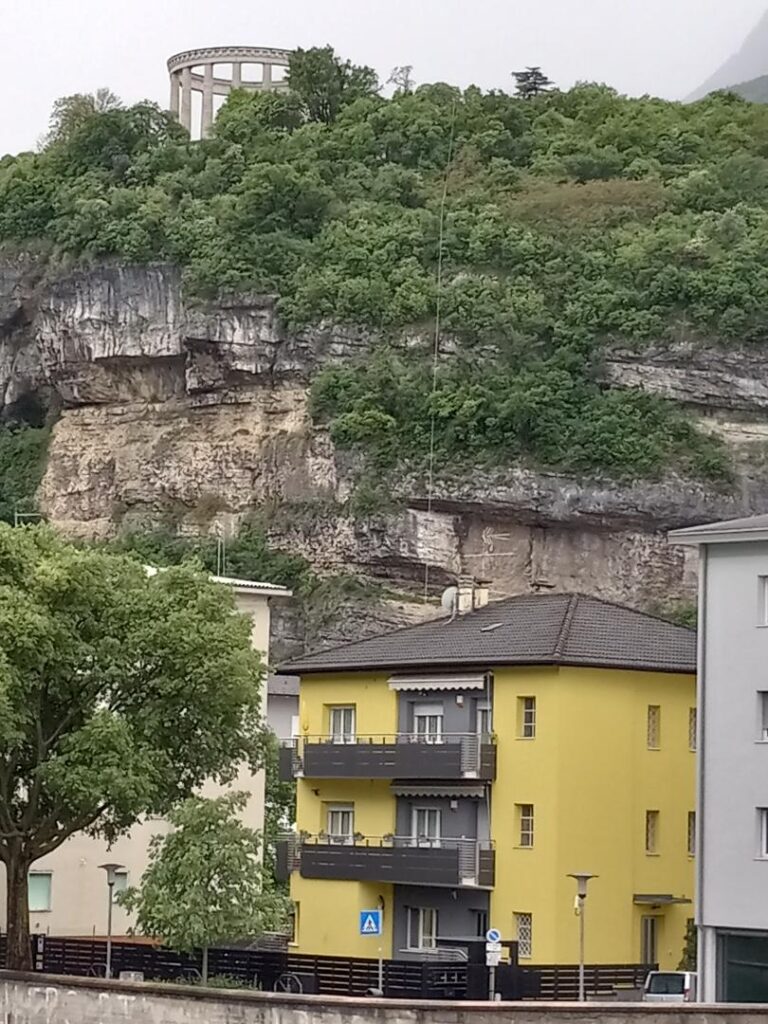
It might be a new tradition for me: a two-week trip to Italy every late April, when air and hotel fares are down and crowds are limited. So, as I did last year, I booked such a trip again, this time mostly focusing on Trento, with extra days in Lucca and Rome.
Unlike last year, however, I wasn’t as physically fit. In early February, while visiting San Pedro, California, I inexplicably half-tore my meniscus in my left knee, resulting in mild pain and a slight limp. Still, I had nearly two months to recover, although that slight limp persisted even as my trip to Italy neared. In 1960, John Steinbeck rode across the US in a van with his dog Charley, the results of which produced a new book: Travels With Charley. My fear was that any book I would write traveling in Italy might be titled, “Travels With a Charley Horse.”
Luckily, or perhaps symbolically, my fears were unfounded. La bell’italia seems to emit its own invisible healing powers. Walking became my therapy.
First part of the trip was to Lucca, the walled city some have called “Baby Florence.” My great-great grandfather, Torello, emigrated from the nearby towns of Altopascio/Badia Pozzeveri, which kind of go together, rather like Minneapolis/St. Paul here in the States. Actually, Altopascio is a fairly well-known medieval city, though much smaller in size than Lucca. Known for its famous bread, Altopascio is also known for a famous battle in 1325 between the Guelphs and the Ghebellines (i.e., papal armies vs. holy [German] emperor armies). The battle is mentioned in Dante’s Divine Comedy and gave Lucca its independence.

The buzz in Lucca when I arrived was that American actors Dustin Hoffman and Helen Hunt were in town filming a movie called, Lucca Mortis. Directed by Peter Greenway, the eccentric Brit who scandalized audiences decades ago with The Cook, The Thief, His Wife, and Her Lover, it’s about an American journalist (Hoffman) who, shaken by the events of 9-11, returns to Lucca to reconnect with his Italian roots. The title doesn’t actually inspire hearts-and-flowers; but Greenway, I am told, fell in love with Lucca long ago and always wanted to make a film there. Let’s hope it’s good one⸺or, rather, just good enough so that it doesn’t inspire hordes of tourists from nearby Florence (90 minutes away by train) to suddenly descend on the city like buzzing cicadas.
Last part of the trip was Roma Aeterna. I made my dutiful trek to the Pantheon, surely the greatest, most well-preserved building from the classical era. It never disappoints; however, last year, the city started charging a small admission fee of 5 Euro (cashless, incidentally–a bit shocking for a nation which otherwise sensibly relies on actual soldi rather than credit cards). Money well-spent. And the entry line was fairly quick. I do, however, wonder how this is going to work come June, July and August, when those cicada crowds arrive⸺that, plus the city’s occasional summer heat waves. But in April? Tutto bene.

The middle part of the trip was the longest: Trent/Trento in the Alto-Adige region. Highlights here were Piazza Dante, where a huge statue of Italy’s greatest poet waves to you as you exit the train station; a statue in the same park dedicated to Eusebino Chino/Chini, the Jesuit missionary who explored Arizona and California in the 17th century (and who, according to colleague Don Fiore, referred to himself not as Italian or Austrian but as a “Tyrolean”⸺regional pride runs deep!); Castello di Buonconsiglio, where prelates met for the “Council of Trent” and changed religious history, giving us Protestantism; and the magnificent mausoleum of WWI patriot Cesare Battisti, who, unlike Father Chino, proudly declared himself an advocate for a new Italy.
Battisti’s monument, incidentally, is located way, way up on hill; it seems to dangle from the heavens. My hotel concierge told me it was a 40-minute walk. I should have immediately known this wouldn’t be true; after all, to most Italians, they consider everything “sempre diritto” (straight ahead). It was more like an 80-minute walk. And the last 20 minutes were all uphill⸺and steep. Would my bum left knee make it? It did. And the views below were worth it.
Like I said, Italy heals. -BDC

Recent Comments